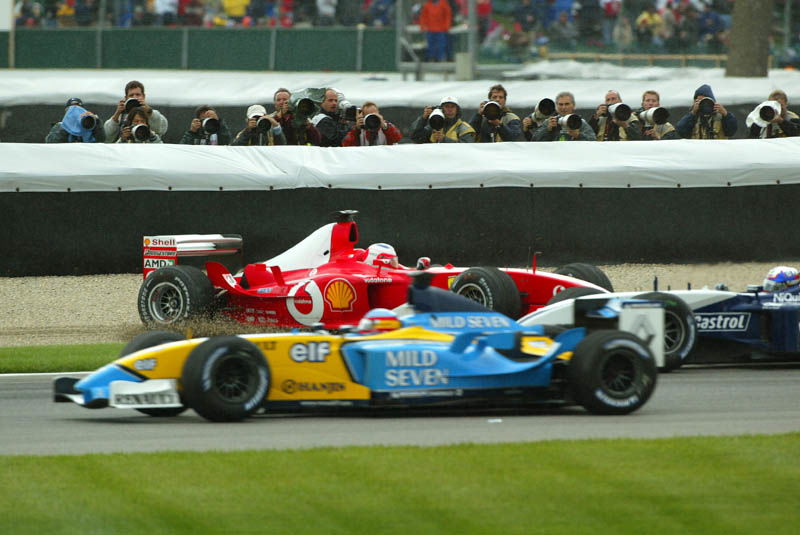Schumi: Tyres were the key.
After all the hype and vitriol surrounding Bridgestone and Ferrari's protest of Michelin's front tyres at the Hungarian Grand Prix, it was perhaps inevitable that the quality of each company's rubber would play a critical role in deciding the title.
After all the hype and vitriol surrounding Bridgestone and Ferrari's protest of Michelin's front tyres at the Hungarian Grand Prix, it was perhaps inevitable that the quality of each company's rubber would play a critical role in deciding the title.
However, just as it appeared that Michelin may still hold the upper hand after taking eight of the top ten places on the grid at the United States Grand Prix, Bridgestone was given a helping hand by the weather gods, who provided a mixed bag of rain and shine at Indianapolis that enabled Michael Schumacher to sprint away from the field and put one hand on his sixth world title.
The German may have struggled early on, when dry conditions favoured Kimi Raikkonen and Schumacher's younger brother Ralf but, once the heavens had opened in earnest, the small advantage that Michelin holds in the dry was overturned - and how - by the greater superiority of Bridgestone's intermediate and wet weather rubber.
Schumacher, despite having only just called in for a second set of slicks, responded to the increasing intensity of the rain by revisiting the pits for a set of intermediates, on which he moved effortlessly back to the front of the field.
"I would agree pretty much that tyres were the key today," the Ferrari driver admitted, "Bridgestone has probably got a lot of criticism this year, but they will be boosted by the performance we have seen today. This one thing makes me happy - we have had this sort of joker in our hand for so long already, but we never have been able to use it. Today was the first time we were able to use our wet tyres, and we sort of won the race with it."
Asked about his two stops in quick succession, the world champion admitted that it had been a close call not to go on to wets the first time around.
"It's a knife edge, honestly - it can be either right or wrong," he explained, "You saw some guys coming in very early, when the first rain came - like Panis, who I think put on wet tyres. It just needed a little extra rain and it would have been the right decision - but it didn't come, and then it was the wrong decision.
"For us, when we came in for the first pit-stop, we thought it would be another one of those spits of rain, soon stopping, and it would have been wrong to be out on rain tyres. So we thought 'okay, dry' - but that was the wrong decision. Fortunately, every one of the frontrunners at that stage had made the same decision, so it didn't cost us too much. With the performance of our rain tyres, I was able to make up the deficit I took from the time before."
Kimi Raikkonen was among those to be caught out on the wrong tyres but, to make matters worse for the Indianapolis polesitter, he was also having to try and make Michelin's wet weather tyres work against the better Bridgestones.
"I think so the beginning of race was really good, and the tyres were working really well," he said of the dry start to the race, "Even when it got a little bit wet, when we were still on the slick tyres, I think it was good for us.
"Then, once we went for wet tyres, it was okay for the first five laps before the Bridgestone had as much advantage over us. But, once it started to dry up, we started to struggle little bit. When I came in the pits, all my four tyres was almost slicks. It was hard to just keep on the circuit. But we didn't want to come earlier in because you never knew if it would start raining more or drying. We were try to keep going as long as we could to make a right decision, either go on new wet tyres or on the slicks."
Raikkonen persevered long enough to be able to take second place in the 73-lap race, retaining the slimmest of hopes of taking the world title.
